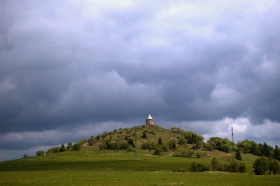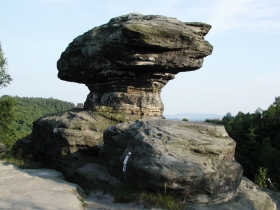Select from ...
Dolní Poohří
Krušné hory
České Švýcarsko
České středohoří
Transport method:









Search results:
Cistercian Monastery - Osek
he Cistercian Monastery in Osek, also called the pearl of the Ore Mountains, is a monument of European importance. Foundations of the Monastery were laid at the end of the 12th century by the Czech noble house of Hrabišic, which invited Cistercian monks to Osek in 1196. The three-aisle Romanesque basilica went through major reconstruction in the 18th century under the leadership of Octaviano Broggio. The heyday of the Monastery came at the turn of the 17th and the ...
The Church of the Assumption of the Blessed Virgin Mary - Žatec
The Church of the Assumption of the Blessed Virgin Mary stands on the site of a large Romanesque Basilica. Its brickwork has been preserved in both towers. Between 1340 and 1370, the famous stonemason Peter Parler was involved in the reconstruction of the church. The main altar with a painting of the Assumption of the Virgin Mary dates back to the 17th century. The side chapel of John of Nepomuk was constructed between 1724 and 1728. Its asymmetric position is not accidental as it is ...
Bořeň - Bílina
Bořeň is a rocky hill perching high above the valley of the Bílina River; in its bottom part it is partly wooded. The peak is 539 metres above sea level. It is a dominant feature not only of the town of Bílina, but also the Central Bohemian Uplands, and thanks to its characteristic shape it is easy recognisable from far away places (such as Žatec); when viewed from the north-west it might remind you of a lion lying down. Bořeň is the largest clinkstone formation in ...
Suchá Kamenice
A cragged pass 1 km from Hřensko towards Děčín. Originally, it was used for floating wood but since the 18th century it has only been used as a hiking path. The brook, bearing the same name, is one of the streams that dry out throughout the year. From 1793 to 1882 a wheat mill was in operation here; it was later equipped with a large sieve and a grinder for spent bark. A pub was built near the road in 1830. Both buildings have long since vanished. There are two memorial ...
Panská Rock
This national nature monument - known as a stone organ is situated near the village of Prácheň near Kamenický Šenov. This geological formation is made of basalt columns (in pentagonal or hexagonal shapes) with mostly vertical orientation. In the 19th and 20th centuries this quarry was used to mine basalt columns. When mining activities were stopped, the mined quarry was filled with rain water, creating a small lake which is now a part of the National Nature ...
Gabriela's Path
A traditional promenade walk between the Pravčická Gate and Mezní Louka. It was most probably named after the sister of Count Edmund Clary-Aldringen, who was the pioneer of the local tourist industry. The path takes you along the foothills of the Křídelní rocks through the most beautiful parts of Czech Switzerland.
Říp Mountain - Mnetěš
Říp Mountain is the most famous and memorable hill in our country, a symbol of the Czech nation. As Cosmas of Prague says in his chronicle, the mythical grandfather Czech came up this hill and decided this was where his tribe and all its descendants would live. The same story is retold later in the Chronicle of Dalimil and famous work by Václav Hájek of Libočany. The event is described by Alois Jirásek in his Old Czech Legends: "...and ...
Mědník Peak - Měděnec
The slopes of the Mědník Peak still clearly show signs of mediaeval mining. František Julius, Count of Sachsen-Laenburg, commissioned the construction of the Chapel of Immaculate Conception of the Virgin Mary at the top of the peak in 1674. On the south-western side below the peak you can find the Chapel of the Sacred Heart of Jesus, built in 1935. On the eastern side in the 19th century there used to be a hotel with a pub called Kupferhübel. The hotel suffered ...
Tisá Rock Walls - Tisá
The Tisá municipality is a gateway to the romantic region of Elbe river sandstones. The Church of St. Anna welcomes visitors in the centre, from where there is a direct path to the Tisa rocks. It will take you to a fantastic rock town with numerous bizarre sandstone formations. Until the early 1920s entry without a local guide was prohibited here. Today the whole area is a paradise for tourists and climbers, for whom there are 113 registered climbing paths. Apart from ...
Klášterec nad Ohří Castle - Klášterec nad Ohří
Klášterec nad Ohří Castle stands on the bank of the Ohře River, in the valley between Doupov and the Ore Mountains. A fortress belonging to the house of Fictum was built here in 1514, and was reconstructed before 1590 into a Renaissance castle. It was rebuilt under the house of Thun into a Baroque shape and four-wing layout in the 17th century. 100 years later the castle was remodelled into the present Neo-Gothic shape. The four-wing castle is a ...


























